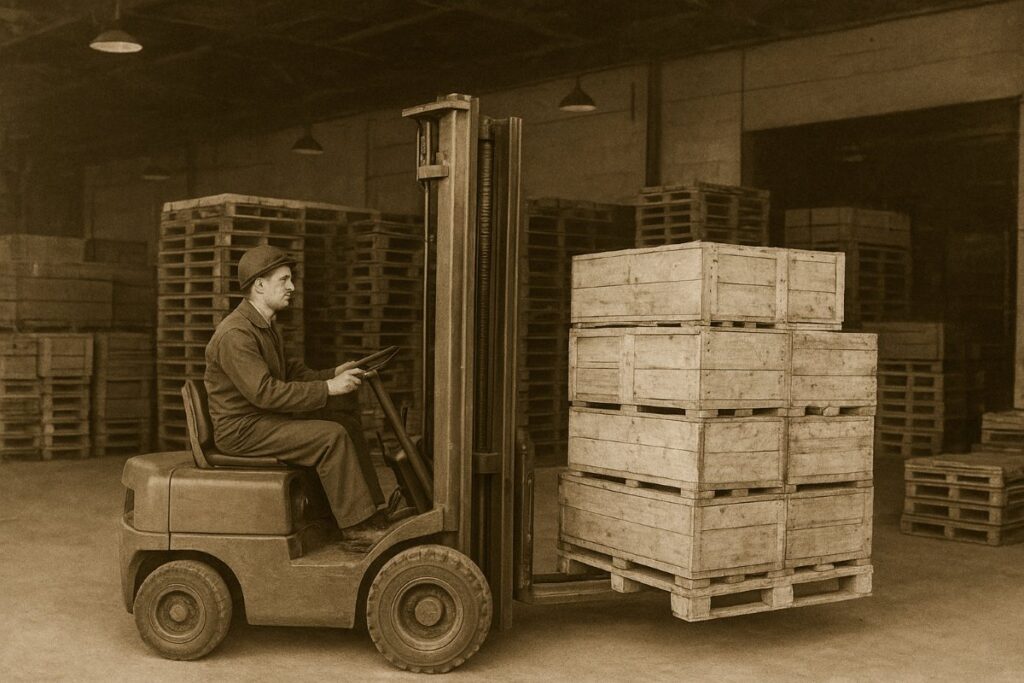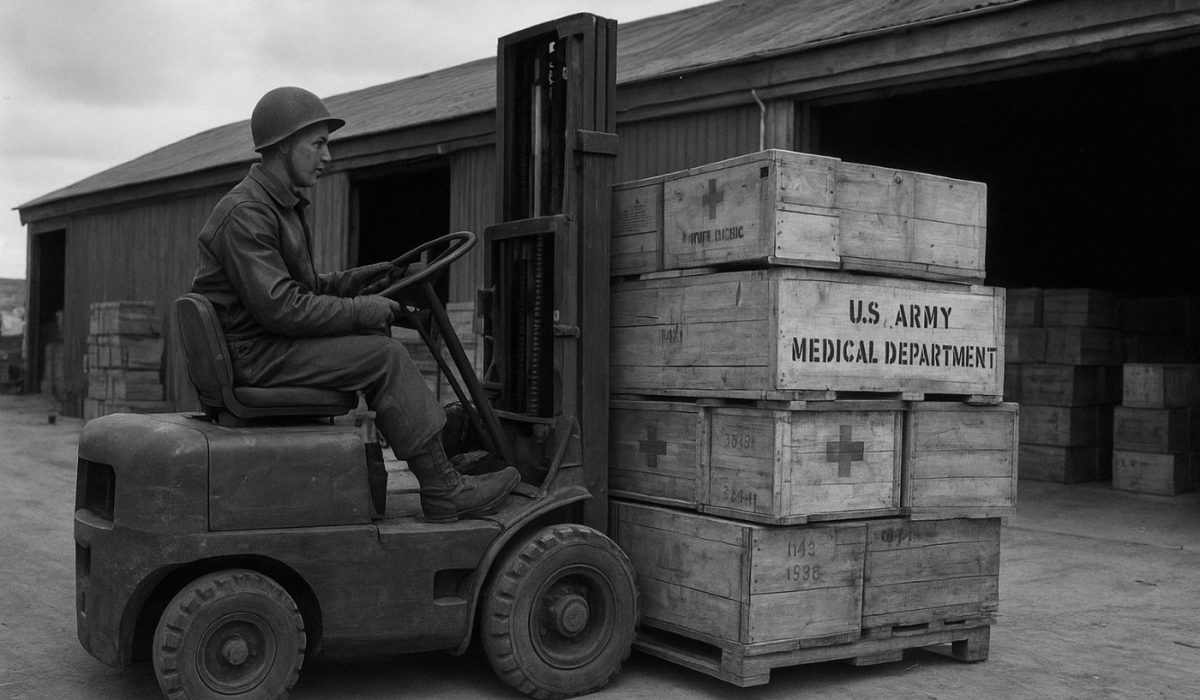The story of palletised freight begins on the supply routes of World War II, when the U.S. Army transformed global logistics forever. Faced with the monumental challenge of moving millions of tonnes of supplies across continents, the U.S. Army Quartermaster Corps sought a faster, safer way to handle cargo.
Traditionally, supplies such as ammunition, food, and medical goods were shipped in loose boxes and barrels, requiring thousands of soldiers and dockworkers to load and unload items by hand. It was slow, labour-intensive, and prone to damage.
To solve this, the Army paired simple wooden platforms (pallets) with newly developed mechanical forklifts. Entire stacks of goods could now be lifted and moved in one motion, drastically reducing handling time and manpower. By 1942, palletised transport was widely adopted in U.S. military depots and ports, particularly across the Pacific theatre, where rapid ship loading and unloading were vital.
The results were astonishing: loading times dropped, cargo damage was significantly reduced, and the efficiency of military logistics surged. What began as a wartime innovation soon evolved into a revolutionary standard for global trade.
Post-War Expansion and Industrial Adoption
After the war, returning troops brought the concept of palletisation into civilian industry. Manufacturers and distributors quickly recognised its benefits; reduced labour costs, improved safety, and faster warehouse operations.
By the 1950s and 1960s, pallets were becoming central to warehouse design, forklift manufacturing, and transport planning. The development of standard pallet sizes such as the UK Standard Pallet and the Euro Pallet helped create compatibility between suppliers, hauliers, and storage facilities.
The result was a more streamlined, standardised logistics system that could handle larger volumes with greater reliability, setting the stage for modern global supply chains.

The Rise of Pallet Networks
In the 1990s, the UK logistics industry underwent another major transformation: the birth of the pallet network model.
Rather than each haulier running long-distance routes with partially filled trucks, regional transport companies began to collaborate through shared distribution hubs. Each member depot would collect pallets from local customers, consolidate them, and send them to a central hub for overnight redistribution.
This approach delivered major benefits:
- Reduced empty miles and lower fuel consumption.
- Nationwide reach for small and medium-sized hauliers.
- Faster delivery times through efficient cross-docking.
Networks like Palletways became household names in UK freight, handling millions of pallets every year and connecting thousands of businesses across the country and beyond.
Palletised Freight in the Digital Age
Today, palletised freight is more advanced and accessible than ever. Technology has introduced online booking systems, real-time tracking, and automated sorting hubs that make sending a pallet as simple as ordering a parcel.
Meanwhile, pallet networks continue to invest in a sustainable future, using electric vehicles, biofuels, and route optimisation software to minimise environmental impact.
From Battlefield to Business Backbone
From its origins in wartime necessity to its role as the foundation of modern supply chains, palletised freight has come a long way. The simple wooden pallet first used to speed up military logistics now underpins global commerce, eCommerce, and industrial trade.
In the UK, the pallet remains one of the most essential tools in logistics, supporting industries from manufacturing and retail to construction and distribution. Whether moved across the country through pallet networks or booked online for a single delivery, palletised freight continues to embody what it always has: efficiency, reliability, and innovation.


